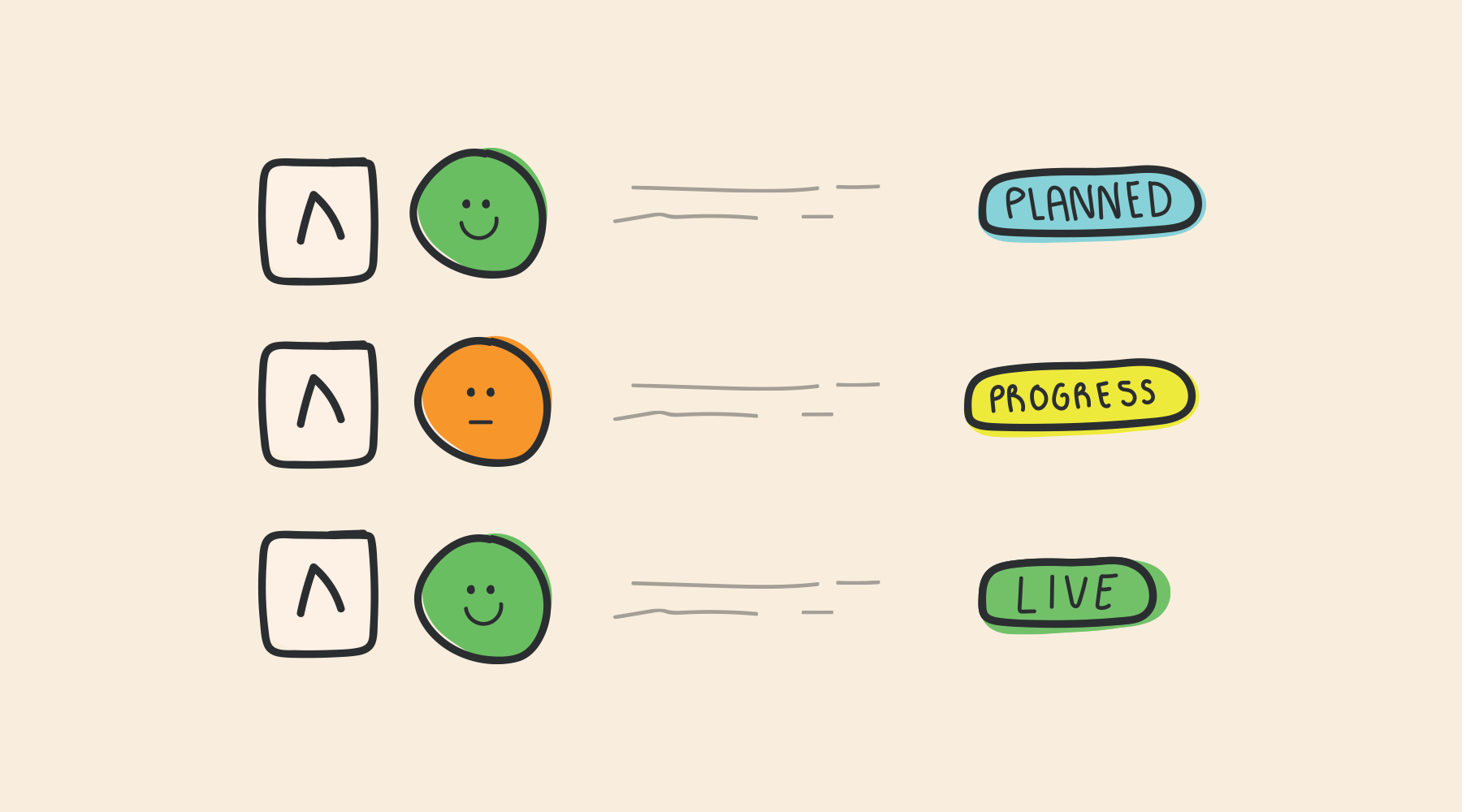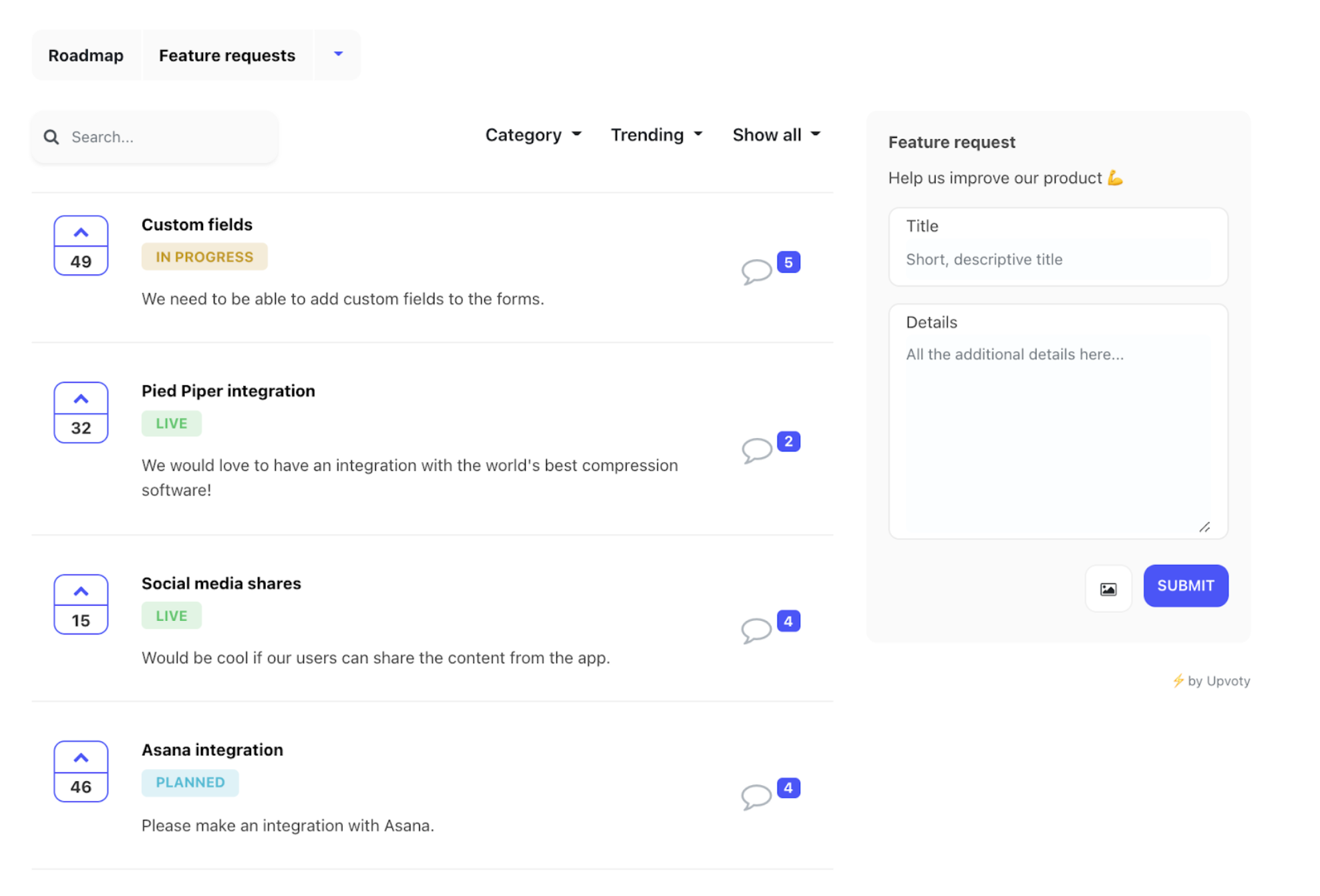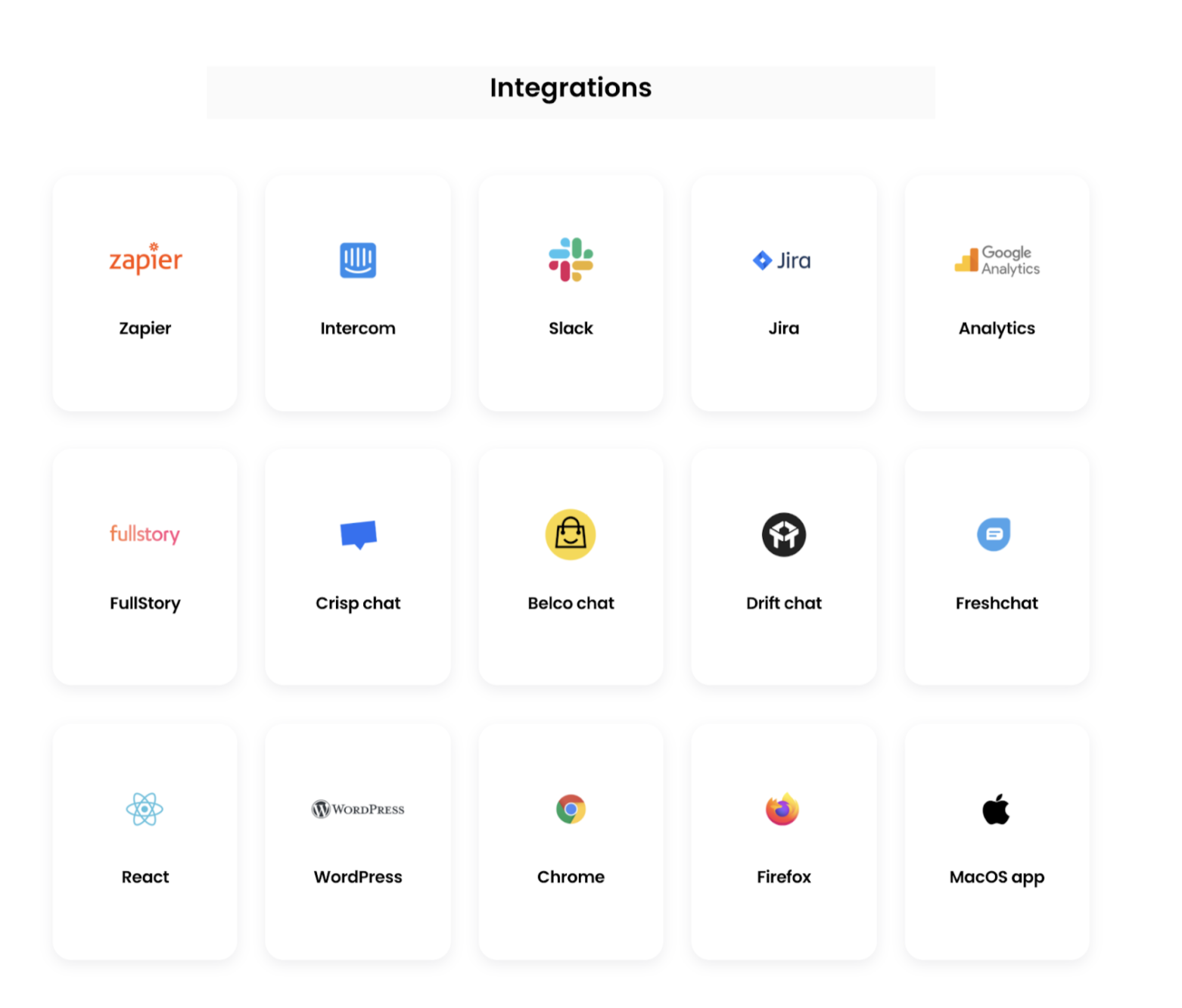How To (Actually) Manage And Document Feedback
As a growing company, you probably already collect customer feedback. But when things are going at lightning speed with your product development, operations, marketing, and sales - managing customer feedback can be tricky.Unstructured customer feedback can lead to data fragmentation and teams working in silos. This leads to inefficient processes, duplicate work, and an unstructured way of moving forward.As a product manager, it’s undeniably important to collect user feedback and make sure it gets integrated into the product development journey. For this, you need a scalable system to manage and document your feedback.In this article, we share our insights and frameworks on how SaaS companies can efficiently manage their customer feedback and actually deliver on them.
Building a Single Source of Truth (SSoT)
Product managers need to synthesize information from multiple sources and teams to make critical decisions. Using various tools and channels to collect, prioritize, and manage customer feedback directly impacts speed and accuracy. This is where a single source of truth comes in (SSoT).With a single source of truth (SSoT), startups can substantially reduce the time spent on identifying and measuring data records, eliminate duplicate entries, and focus on the right feedback. Think of it as your go-to user feedback roadmap. Your teams can have access to consistent accurate data, get complete visibility into cross-functional activities, and keep them engaged in their shared mission.When it comes to customer feedback, companies often rely on solutions like Spreadsheets. While it’s an affordable option, it often comes at the expense of repetitive manual tasks that are time-consuming and reduce the productivity of your team. Moreover, it’s complicated to maintain updates, track progress, notify users, and make sure everyone in your team is on the same page.Especially in a remote, asynchronous environment, you need to make sure that all the data is centralized in a tool. All feedback in one place means reduced manual work needed to gather information from different sources, better communication, and enhanced segmentation.Choose a tool that offers effective communication between teams. For instance, if a product needs more information on the next month’s update, they should have a single source from where they can pull in data, draw insights, and eliminate the back-and-forth with different teams.A product feedback tool can act as a single source of truth. It allows several teams from a company to collaborate on it and work on problem-solving together. People can go in, check all the comments, discussions, and update themselves with the latest information.More sophisticated product feedback tools like Upvoty are meant to benefit both teams and your users.For you, they store all information in a single dashboard, help you reduce the amount of lost feedback, and encourage cross-team communication for better results.For users, it offers transparency, meaning they can see you constantly improving and working on their feedback. This could be a differentiator between you and your competitors.In a nutshell, when you keep all of your user feedback in a centralized dashboard, it becomes much easier and faster to pick out what’s important. By segmenting it out into different categories, prioritizing tasks, and having real-time conversations, you can cut through the noise and focus on what's important.That said, let’s dive into the specifics of the frameworks you can use to manage it better.
Think of it as your go-to user feedback roadmap. Your teams can have access to consistent accurate data, get complete visibility into cross-functional activities, and keep them engaged in their shared mission.When it comes to customer feedback, companies often rely on solutions like Spreadsheets. While it’s an affordable option, it often comes at the expense of repetitive manual tasks that are time-consuming and reduce the productivity of your team. Moreover, it’s complicated to maintain updates, track progress, notify users, and make sure everyone in your team is on the same page.Especially in a remote, asynchronous environment, you need to make sure that all the data is centralized in a tool. All feedback in one place means reduced manual work needed to gather information from different sources, better communication, and enhanced segmentation.Choose a tool that offers effective communication between teams. For instance, if a product needs more information on the next month’s update, they should have a single source from where they can pull in data, draw insights, and eliminate the back-and-forth with different teams.A product feedback tool can act as a single source of truth. It allows several teams from a company to collaborate on it and work on problem-solving together. People can go in, check all the comments, discussions, and update themselves with the latest information.More sophisticated product feedback tools like Upvoty are meant to benefit both teams and your users.For you, they store all information in a single dashboard, help you reduce the amount of lost feedback, and encourage cross-team communication for better results.For users, it offers transparency, meaning they can see you constantly improving and working on their feedback. This could be a differentiator between you and your competitors.In a nutshell, when you keep all of your user feedback in a centralized dashboard, it becomes much easier and faster to pick out what’s important. By segmenting it out into different categories, prioritizing tasks, and having real-time conversations, you can cut through the noise and focus on what's important.That said, let’s dive into the specifics of the frameworks you can use to manage it better.
5 ways to manage your customer feedback efficiently
Companies spend a lot of time developing a proper understanding of how they can move customer feedback through the organization and implement a system that is easily adaptable. When different teams are involved throughout the feedback journey, it’s important to consider their workflow.For instance, if your sales team collects user feedback via Slack, it’s important to consider their workflow instead of forcing unnecessary changes. So, you should consider choosing a user feedback tool that integrates with Slack so your team can easily adapt it.The idea is to adopt easy and efficient processes when managing customer feedback.
1. Use sprints to track feedback uniformly
Integrate customer feedback alongside stakeholders’ feedback into sprints. One way to do this is by taking a Scrum approach. Simply put, this process involves a product manager or owner who shares evolving business goals and customer feedback to the development teams.So, you can organize weekly, monthly, or quarterly sprints wherein your team discusses ideas, shares data, draws insights, and decide which features/changes you want to develop next.We recommend monthly sprints since it’s not too frequent to cause disruptions in your development process, and a substantial time to collect and process more customer feedback data.At Upvoty, we have a slightly more fun and interesting way to do this. We conduct monthly challenges of the best feedback the team members have heard or come across this month and add it to the “sprint” board. Then, we let everyone upvote the best ideas that have been submitted to the board. We call it feature voting.
2. Have all information at your fingertips
Better documentation of customer feedback leads to better product development decisions. We’ve already talked about the importance of using a user feedback tool and how having a consolidated space for all your user feedback can make all the difference in your product development.It’s time to see how a product feedback tool looks in action and what you should expect from it. Upvoty lets you tie all your feedback and feature requests together in your own product roadmap. You can create custom statuses, make internal comments, and even assign specific team members.You can also notify users of what’s new right from your dashboard and keep the customer feedback loop updated. Additionally, you can also merge similar or duplicate posts to make sure that your team only works on relevant, unique feedback.Moreover, with Upvoty you can build your own feed of all the product updates that your team has released lately. This is called a changelog feed. It helps users stay informed, reduces repetitive feature requests, and keeps your feedback board lean.Product feedback tools help you keep communication channels open - so customers don’t have to raise a ticket, wait for it to get escalated, approved, and then addressed. They can simply log in to your customer feedback portal and leave their requests.The best part? Your team can respond to them quickly which helps enhance user engagement and experience.
Upvoty lets you tie all your feedback and feature requests together in your own product roadmap. You can create custom statuses, make internal comments, and even assign specific team members.You can also notify users of what’s new right from your dashboard and keep the customer feedback loop updated. Additionally, you can also merge similar or duplicate posts to make sure that your team only works on relevant, unique feedback.Moreover, with Upvoty you can build your own feed of all the product updates that your team has released lately. This is called a changelog feed. It helps users stay informed, reduces repetitive feature requests, and keeps your feedback board lean.Product feedback tools help you keep communication channels open - so customers don’t have to raise a ticket, wait for it to get escalated, approved, and then addressed. They can simply log in to your customer feedback portal and leave their requests.The best part? Your team can respond to them quickly which helps enhance user engagement and experience.
3. Prioritize customer feedback
So you’ve got the feedback from your users and have all the data. At this stage, you need to prioritize feature requests so you know what to build first. There are plenty of ways to prioritize customer feedback, but here’s a quick 5 step-process we follow:Step 1: Identify which feature requests align with your business goals. If your business goal is to increase retention and reduce churn, prioritize requests from customers that have higher customer lifetime value (CLV) or key value accounts.Step 2: Prioritize further by other factors that matter. You could prioritize user requests based on recency, development time and cost, strategic alignment, or sheer number of requests.Step 3: Assess your market for feasibility and ROI. Gather information on the real-world user data on your product, or if you’re developing a new feature, do a competition analysis to understand how to best build your product roadmap. This business intelligence will help you make more data-driven decisions and validate your ideas at the same time.Step 4: Understand the “cost” of each feature. Some features are expensive to build and have lower business value. Some may be affordable to build and have higher business value. Gather internal data and ask your development team to get an overview of how much time and cost a feature will take.Step 5: Add it to your product roadmap and get stakeholders involved. Use customer evidence and feature requests to make your case for the new feature - and send it to your stakeholders. This will help bring transparency in the product development and also back up your decisions, as a product owner, with solid data-driven and contextual information about the real-world use cases.
4. Make it easier for customers to share their feedback
It’s important that your product feedback tool offers integrations with other solutions that your team already uses. Tools like Zapier, Slack, Jira, Google Analytics, Drift chat, WordPress are some of the most essential solutions that you should look out for.Instead of spending hours sorting lists, tagging notes, and notifying people, shuffling between Slack, Jira, and Spreadsheets - product leaders can spend time gathering insights on listening to their customers.On top of that, a product feedback tool goes beyond collecting data and helps validate ideas by offering features like voting, scoring, prioritization, categorization, and more. Check out our guide to using third-party integrations.
Check out our guide to using third-party integrations.
5. Take action on feedback faster
Customers have the greatest ideas at times and you need to be there to capture and take action on them. This means, you need to be proactive and respond to them as quickly as possible; shorter response times.According to a report, 90% of companies (of 1,000) do not acknowledge or inform their customers that an email has been received. With a product feedback tool like Upvoty, you can prioritize important feature requests, add them to your roadmap, share it with your internal team, as well as notify users about the upcoming product upgrades. By streamlining this entire process of feedback collection, segmentation, and creating a roadmap, you can accelerate your deployments faster.Once you’ve released the product update, be intentional in sharing the outcome. Talk about it on your newsletters, socials, blog posts, and update it on your product feedback log. Highlight the use-cases and how it could help customers achieve specific goals.
With a product feedback tool like Upvoty, you can prioritize important feature requests, add them to your roadmap, share it with your internal team, as well as notify users about the upcoming product upgrades. By streamlining this entire process of feedback collection, segmentation, and creating a roadmap, you can accelerate your deployments faster.Once you’ve released the product update, be intentional in sharing the outcome. Talk about it on your newsletters, socials, blog posts, and update it on your product feedback log. Highlight the use-cases and how it could help customers achieve specific goals.
Manage Feedback With Upvoty - Get A Free Trial
Having a solid feedback process ensures that your teams can work on relevant, actionable feedback coming from important customer segments. It also helps them manage their upcoming tasks and align them with the feedback roadmap.Upvoty makes it easier for you by unifying your user feedback record in a single dashboard. What’s really a differentiator is the flexibility and the control you have with our product feedback tool. So let’s say you want to create hidden boards that are only accessible to internal team members and not to users. Upvoty lets you do this with a feature called private boards that you can use for your internal progress.Besides, the organization of user feedback becomes much simpler with features like tags, categories, estimated dates, markdowns, and more.Check out the full feature list here.We know that it’s tough to adopt a new tool, so we ensure that Upvoty’s dashboard is easy to use and can be quickly adopted across teams and companies. If you’d like to know more about our tool and experience it first-hand, sign up for a free trial.

